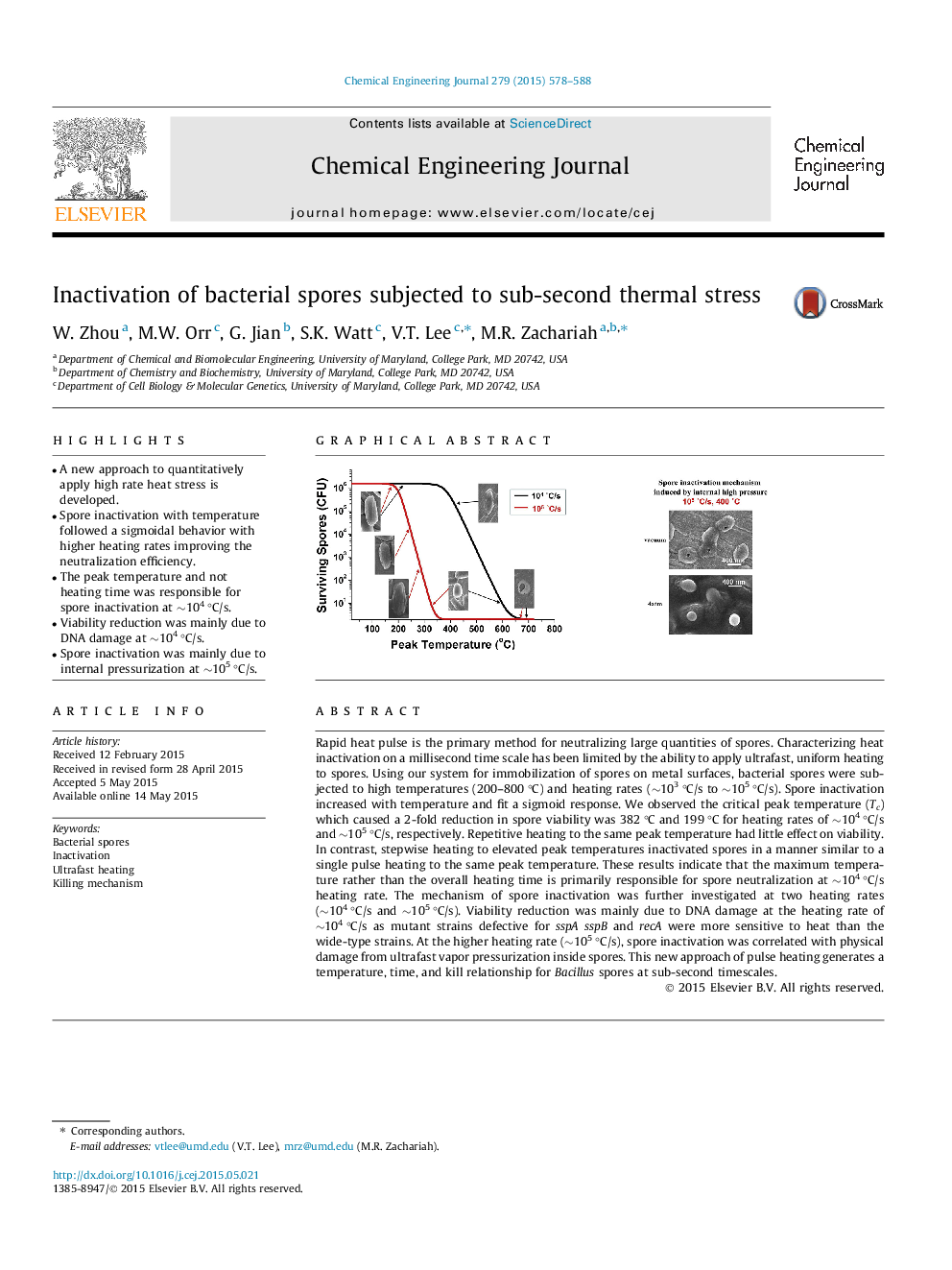| Article ID | Journal | Published Year | Pages | File Type |
|---|---|---|---|---|
| 146101 | Chemical Engineering Journal | 2015 | 11 Pages |
•A new approach to quantitatively apply high rate heat stress is developed.•Spore inactivation with temperature followed a sigmoidal behavior with higher heating rates improving the neutralization efficiency.•The peak temperature and not heating time was responsible for spore inactivation at ∼104 °C/s.•Viability reduction was mainly due to DNA damage at ∼104 °C/s.•Spore inactivation was mainly due to internal pressurization at ∼105 °C/s.
Rapid heat pulse is the primary method for neutralizing large quantities of spores. Characterizing heat inactivation on a millisecond time scale has been limited by the ability to apply ultrafast, uniform heating to spores. Using our system for immobilization of spores on metal surfaces, bacterial spores were subjected to high temperatures (200–800 °C) and heating rates (∼103 °C/s to ∼105 °C/s). Spore inactivation increased with temperature and fit a sigmoid response. We observed the critical peak temperature (Tc) which caused a 2-fold reduction in spore viability was 382 °C and 199 °C for heating rates of ∼104 °C/s and ∼105 °C/s, respectively. Repetitive heating to the same peak temperature had little effect on viability. In contrast, stepwise heating to elevated peak temperatures inactivated spores in a manner similar to a single pulse heating to the same peak temperature. These results indicate that the maximum temperature rather than the overall heating time is primarily responsible for spore neutralization at ∼104 °C/s heating rate. The mechanism of spore inactivation was further investigated at two heating rates (∼104 °C/s and ∼105 °C/s). Viability reduction was mainly due to DNA damage at the heating rate of ∼104 °C/s as mutant strains defective for sspA sspB and recA were more sensitive to heat than the wide-type strains. At the higher heating rate (∼105 °C/s), spore inactivation was correlated with physical damage from ultrafast vapor pressurization inside spores. This new approach of pulse heating generates a temperature, time, and kill relationship for Bacillus spores at sub-second timescales.
Graphical abstractFigure optionsDownload full-size imageDownload as PowerPoint slide
